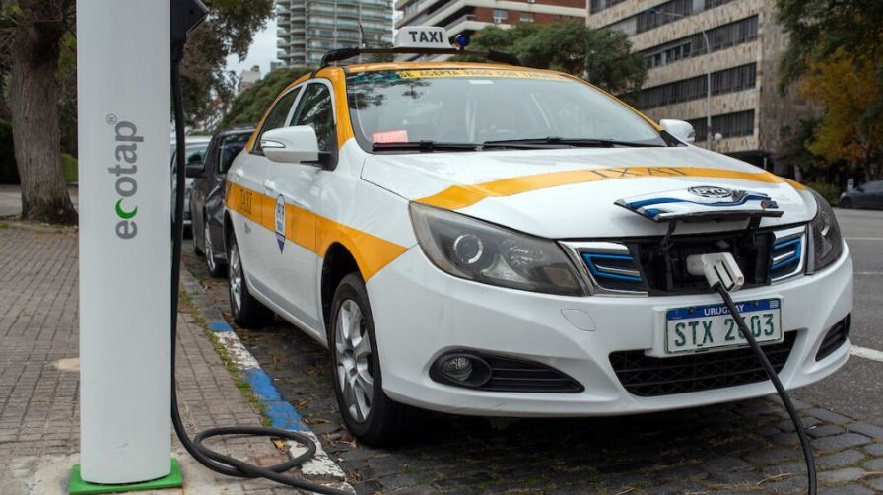Several Latin American countries stand out for promoting electric mobility through various incentives, but Uruguay excels as the only one implementing subsidy policies, a common practice in most European countries such as France, Italy, the Netherlands, and others.
In this context, the Uruguayan government offers support to users and companies wishing to incorporate electric mobility into their activities, either by providing direct financial assistance for investment or reimbursing a specific percentage based on the amount invested.
What are the subsidies in Uruguay that make it a leader in Latin America?
Subite Programme
This programme is developed by the National Energy Directorate (DNE) of the Ministry of Industry, Energy and Mining (MIEM) and aims to promote the adoption of electric vehicles (EVs) in public or private companies and institutions in the country.
It offers a financial incentive of $30,000 to organisations that lease EVs for more than three months.
It is worth mentioning that it is aimed at companies that have never had electric vehicles in their fleets; hence, those that already have cannot participate.
There are a total of 100 available spots, and the programme will be valid until 31/12/2024 or until the spots are exhausted, whichever comes first.
Subite for Motorcycles and Tricycles Segment
This initiative offers facilities for the acquisition of up to 1,000 electric motorcycles and 100 tricycles.
Currently, the call is open nationwide.
The benefits for those who purchase these units are: a 10 per cent reimbursement of the purchase value (caps apply: 250 dollars for motorcycles and 450 dollars for tricycles), a fixed discount on the UTE bill of $2022, and a reimbursement rewarding energy efficiency that will be received twelve months after the purchase (calculated based on the unit’s usage).
A state insurance will also be provided for one year.
The companies currently participating are: Binze S.A., Deceleste S.A., Digital World S.R.L (Go Green Cycles), Agrolife S.A. (Kiwi Movilidad Eléctrica), Nicatel S.A., Theleathertech S.A., UDITEX S.A., Serviprado S.A. (Veems), Epicentro S.A. (Zanella).
There are over 40 models available for purchase with access to these incentives and hundreds of purchase points distributed in the central, southern, eastern, and coastal areas of the country.
Maintenance and technical assistance points also exist.
Access to the benefits is granted at the virtual or physical point of sale, where the provider initiates the online procedure.
From there, the reimbursement is processed 15 days after the notification of the electric unit delivery.
Plan 2024
The National Administration of Power Plants and Electrical Transmissions (UTE) is implementing a measure included in its 2024 plan.
Under this measure, UTE refunds $4,048 plus VAT to all users who purchase and install a charger for an electric vehicle at a residential level.
This project has been in effect since 15 November 2023 and will remain in force until June of the current year.
It is important to note that each customer can obtain bonuses for a maximum of 6 electric devices throughout the plan’s duration.
Users wishing to apply can do so through the UTE website, WhatsApp, or in person at any UTE Commercial Office in the country.
Energy Efficiency Certificates (CEE)
The CEE grants financial recognition to energy efficiency measures based on the energy saved by these and other attributes that contribute to achieving the National Energy Efficiency Plan’s goal.
Energy efficiency measures that cumulatively meet certain requirements can be presented.
Among these conditions, each proposed measure must have been implemented at least one year before applying for the certificate, with maximum deadlines established in each call.
Good Policies, Great Results
These measures, “imported from Europe” and applied in Uruguay, have borne fruit: as of April 2024, around 5.09 per cent of the vehicles in the country’s automotive fleet are electric.
Furthermore, this progress is reflected in sales, which have experienced steady growth in recent years.
During 2023, sales soared by 80.92 per cent compared to 2022.
In the first four months of 2024, 2,378 units have already been sold, including cars, SUVs, utility vehicles, and trucks.
On the other hand, Uruguay’s public charging network also mirrors the positive landscape of electric mobility.
Usage of the network increased by 90 per cent in the past year.
This growth is evident in the 220,000 charging sessions conducted during that period, involving a consumption of 4,600,000 kilowatt-hour and generating revenue of over 660,000 dollars.
Three European Countries with Subsidy Policies
France
The country offers an eco-bonus as part of the national “Green Industry” strategy.
The purchased or leased vehicle must have a minimum environmental score to be eligible for this aid.
This allows for a more comprehensive assessment of a car’s carbon footprint.
Ademe, the government’s environmental agency, has published a list of electric vehicles eligible for the 2024 eco-bonus.
This excludes almost all models manufactured outside of Europe, particularly in China.
As a result, it significantly reduces the market for subsidised vehicles.
Many manufacturers are working intensively to offset the end of these aids by reducing manufacturing costs, such as the Citroën ë-C3 and the Renault 5, announced from 23,000 euros and 25,000 euros, respectively.
Italy
Users who purchase a hybrid or electric car will be entitled to an additional bonus of 25 per cent if its price is below 30,000 euros.
For the purchase of eCars priced up to 35,000 euros, incentives range from a minimum of 6,000 euros to a maximum of 13,750 euros.
For hybrids priced up to 45,000 euros, a contribution of 5,000 to 10,000 euros can be requested.
Additionally, for less affluent classes, the plan offers an extra discount of 25 per cent.
The Netherlands
In 2023, the Dutch could benefit from a financing rate of 2,950 euros for new battery electric vehicles (BEV).
There is also a subsidy plan for H2 trucks and vans from 2024 to 2028.
To learn more about electromobility in the region, visit the Mobility Portal Latinoamérica







